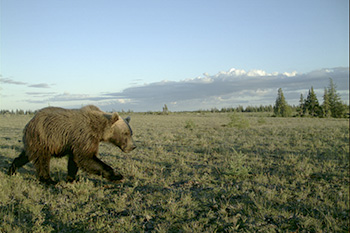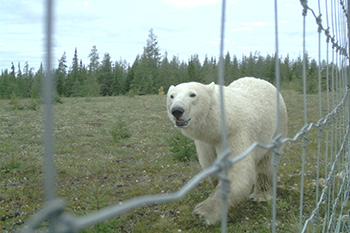Dr. Doug Clark on change
Wapusk National Park
Flying over Wapusk National Park in June 1998, Dr. Doug Clark observed an oddity.
While “hitching a ride” on a Canadian Coast Guard helicopter, Dr. Clark saw a large, brown, furry mass below and racked his brain for what it might be. The correct answer, a grizzly bear, was not at the top of the list for the former park warden and a longtime researcher based out of the University of Saskatchewan.
“Looking down and thinking, ‘Where are the horns on that muskox?’, it was quite a moment. That’s going to stay with me,” he recalled.
Dr. Clark was not the first to confirm the presence of grizzlies, pushing the total number of bear species in the park to three. But upon reflection, it was a significant discovery from a scientific perspective, and also of a more personal philosophy.
It was particularly striking seeing park officers, many of whom were long-time locals, sharing his bewilderment of seeing a grizzly in the area.

“We were seeing something just getting started and that something was pretty big,” he said.
The rate of grizzly observations is more than doubling every decade, as researchers try to determine the reason for their attraction to the area. While the knee-jerk reaction to change in the Arctic can be to regard new developments as negative, Dr. Clark is open to the grizzlies’ appearance as being a positive.
“There’s so much doom and gloom about change in the Arctic, and then you see something like that happen… it’s maybe indicating some other stuff that isn’t great, but this in and of itself is really fascinating and really amazing and is probably a good thing,” he said, “so let’s figure out what it does mean.”
Wapusk, indeed, is a place of change. In 1998, the same year he saw the grizzly, it was an El Niño year of surprisingly warm temperatures. The park officers, despite their intense familiarity with the land, faced a number of new situations such as ice jams and floods. In many ways, Wapusk is a difficult place to understand, and Dr. Clark anticipates that change will only keep accelerating.
“That’s just added to the challenge of managing a national park, getting your head around how to manage a national park, and even living up there,” Dr. Clark said.

© University of Saskatchewan
“It makes it not just a rewarding place, but an important place to learn from for research, through ongoing management of the park, and rising to the challenges that keep evolving,” he added.
He recognizes the challenge of change with respect to the town of Churchill and its residents, who already inhabit an unforgiving landscape. They resiliently adapt to morphing climate conditions, and issues such as lacking access to the rail line for a prolonged period.
“It’s a place that challenges people. There are obvious physical challenges, there are obvious mental challenges working or living or making a living out there,” Dr. Clark said.
Living in Churchill and working in Wapusk National Park isn’t for everyone, but for those it appeals to, there’s no better place.- Date modified :